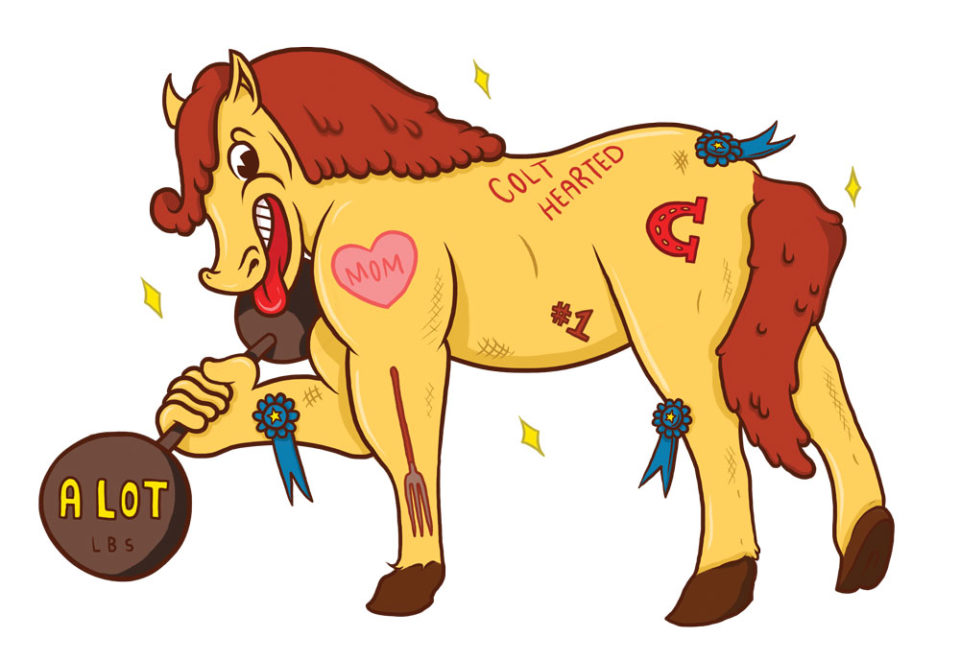One and only one, species of livestock has shown at every agricultural fair held in Calgary – including the Stampede, the Calgary Industrial Exhibition, the Spring Fair and their predecessors – since 1886: the draft horse.
130 years
That’s how long draft horses have been shown annually on the Stampede Grounds.
4
Breeds of draft horses predominate in Alberta: Belgians, Clydesdales, Percherons and Shires. While Clydesdales and Percherons were historically the most popular in Alberta, the numbers of Belgians in the province come close to matching the numbers of Clydesdales and Percherons today.
The breakdown of the draft-horse breeds shown at the Stampede is:
35% Clydesdales
35% Percherons (which, along with Belgian-Percheron crossbreeds, dominate the Heavy Horse Pulling competition)
12% Belgians
8% Shires
18 hands
(About six feet) is the height of the average draft horse at the withers (shoulder). A hand is four inches and horses are measured in hands.
2,000 pounds
Is the average weight of a draft horse. Clydesdales are generally the lightest of the four breeds, while Belgians and Shires are the heaviest, but weight ranges can vary substantially across all breeds. The horses working in Draft Horse Town at the Stampede are generally 200 to 400 lbs. lighter. Still another breed, the Norwegian Fjord, is one of the smallest draft horses at 900 to 1,200 lbs.
3 years old
That’s when draft horses begin their training as work animals, but they don’t start heavy work until they’re four.
8,000 pounds
The remarkable weight a 2,000-lb. draft horse can pull, but the average weight any draft horse can pull depends on the vehicle, the terrain and the condition of the horse. A fit horse can pull a load three times its weight in a wheeled vehicle on a good road, twice its weight on a marginal road or trail with hills and the equivalent of its own weight on a poor road or trail with water crossings.
17,000 pounds
The heaviest dead weight pulled over a distance of seven feet in a record set in September 2014 by two Belgians weighing 4,800 lbs., together. While a single draft horse can pull three times its own body weight, a team working together can pull more than three times what each of them could pull working alone.
60-70 pounds
Amount of hay a day are consumed by a draft horse, but size, age and activity level determine how much the horse may need.
In the wild, a horse will graze 16 to 17 hours every day.
50 pounds of manure a day
The amount the average draft horse produces. At four times a day, they are very regular with all that fibre in their diet. Interesting note: manure used as fertilizer collected from horses worked daily yields mushrooms of the highest grade, whereas manure from horses that are relatively inactive produces mushrooms of lower grade.
25 years
This is considered old for a working horse but some draft horses can live to be 28 to 30. Most probably live to about 15. Genetics and quality of care are important factors in a horse’s longevity. Generally, a working horse on a farm will outlive a working horse in the city.
2 times a day
How often a draft horse is groomed to keep their coat clean and shiny if they are being worked daily.

